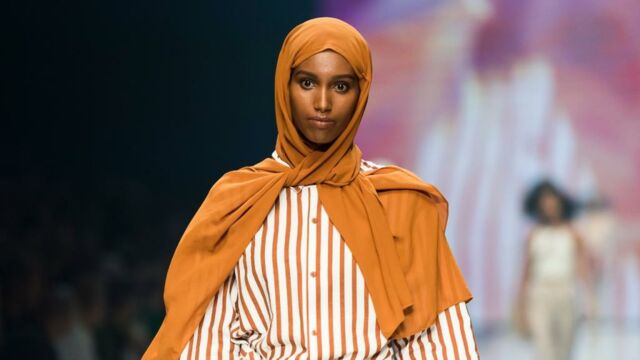The modesty movement started gaining momentum in the late 2010s, but since then we haven’t been seeing the term pushed around a lot. It may have lost the spotlight, but modest fashion is here to stay. Grazia Middle East recently revealed that by 2024 the modesty market is projected to be valued at $402 billion.
Discover our latest podcast
Origins of the movement
Modest dressing is a concept that is taken very seriously by a lot of communities around the world. It’s all about covering what is sacred to you, and keeping it for yourself. But, who said modest dressing had to be boring? No one!
The modesty movement was pioneered predominantly by muslim fashion bloggers based in Europe and the UK. These women, and men, began sharing their modest styling tips online, and started stacking up followers from all over the world.
Among the thousands of influencers who share modest fashion tips online, Dina Torkia is probably one of the leading figures in the community. She started blogging over a decade ago, and since then a lot has changed in terms of modest fashion and representation. She wrote in her book, Modestly:
At the same time, fashion began to embrace modest dressing. More clothes than I could actually wear landed on the high street, while models such as Halima Aden began conquering the runways. It may have taken a while, but, now I'm 29, it seems the world has finally realised what we had known all along: there are nearly a billion Muslim women in the world, each with our own relationship to God, our own understanding of modesty and, yes, our own style.
Hit and a miss
In 2018, H&M started their first ever modest collection and in 2020, Primark also launched their modest collection. Both these lines received a lot of backlash from the community, as many women saw it as an empty gesture of inclusivity. The brand who did succeed to win over thousands of fashion-lovers was Uniqlo.
Uniqlo has an ongoing collection with British-Japanese fashion designer, Hana Tajima and this collaboration received rave reviews because of its authenticity. Tajima’s intention was not just to create clothes for the modest demographic, but she wanted to create something that any person could wear. She told Vogue:
The clothing is always for everybody.
For me, personally, I like this idea that someone from a completely different background or a completely different style could see a piece in the collection and think, ‘I could really work that into what I want to wear.
Modest fashion is definitely increasing in the market, but there is still a lot of work to be done—especially given that this community is incredibly diverse, in the most amazing ways.















